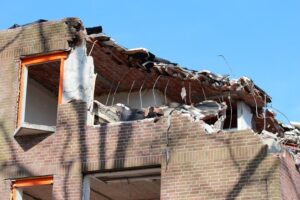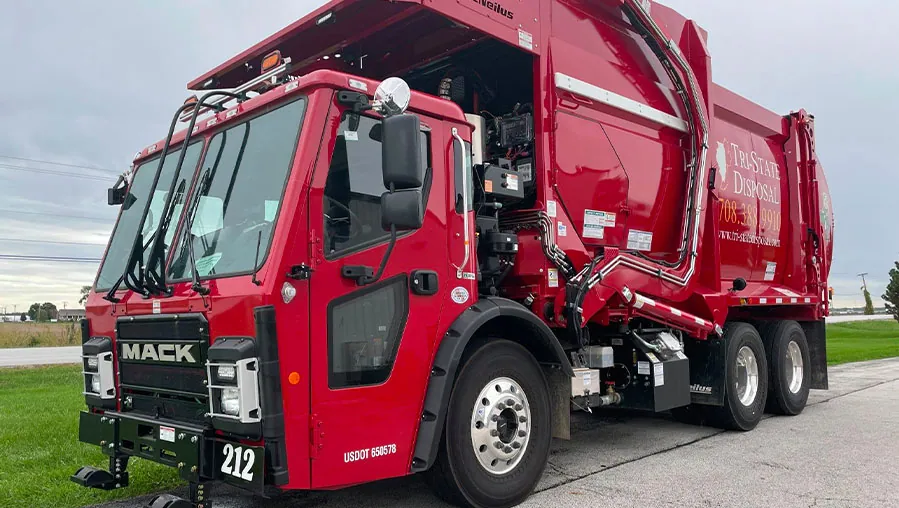 If you purchase a property with an existing structure that needs to be torn down, your first step is to make sure that the demolition process is safe and effective. You can’t use the property for building or development until the unsound structure is properly removed.
If you purchase a property with an existing structure that needs to be torn down, your first step is to make sure that the demolition process is safe and effective. You can’t use the property for building or development until the unsound structure is properly removed.
Demolition of existing structures can be more complex than you might think. Follow these guidelines and considerations in order to make sure the demolition safely removes the structure without endangering the property or the people at work.
Assess Interior and Exterior Dangers
Even if you know the structure on the property is a teardown, you can’t begin demolition until you know the dangers of the structure. The type of dangers greatly depends on what type of structure it is and how long ago it was built.
For example, if you are tearing out a section of old houses to make room for new business, you might look for asbestos in insulation, siding, and ceiling tiles. If you take a bulldozer to a home or old office building full of asbestos, you put the entire crew of workers at risk of inhaling the fibers that lead to aggressive lung cancer.
Generally, a building with asbestos materials needs to be cleared of asbestos-containing materials before it is razed.
Other dangers to check for include buried electrical lines, old septic fields or wells (these can be buried, posing a hazard to heavy equipment that could fall into underground space), and hidden pests. For example, if there is a large colony of bees living in the structure, you could damage their home and put people at risk for stings.
The property needs to be prepped for demolition by thorough engineering inspection. Make sure you review city records and old work permits associated with the property to help you get a better idea of what hidden dangers the property could hold.
Consider Soil Testing
Part of preparing land for building is making sure it is safe for use. If you plan on building a tract of new townhomes on the lot, for example, you need to check the soil for safety. Lead in the soil can cause neurological damage to children. Other chemical toxins in the soil can also pose a safety hazard.
Test the soil as part of your plans for demolition. Make plans with a disposal company to haul off contaminated soil. You may need to invest in soil rehabilitation before moving forward with building.
Use a Commercial Dumpster for Garbage and Debris
Demolition is a messy business, but you can stay organized by using a commercial dumpster. Don’t begin clearing or dismantling until you have a place to put the debris.
Sometimes, demolition requires many loads of construction waste, but it also can mean clearing out leavings from previous owners. In an abandoned warehouse, for instance, partiers might leave trashed furniture and old liquor bottles.
To judge how many dumpster loads you might need, contact a local waste removal company for a quote before demolition begins. You might have the dumpster hauled off on a daily basis, or you might decide to rent several dumpsters at once.
As you decide the best course of action for hauling off the demolition debris, don’t forget to contact the city for guidelines on dumpster placement and to find out if you need a permit for the dumpster to be placed on a public alley or sidewalk.
Collect Special Waste Separately
Dumpsters are a catch-all solution for most trash, but you still need to be careful about disposing of special waste. Make separate disposal plans if the property contains:
- Old fuel tanks. These will need to be taken to a hazardous waste facility.
- Paint cans that are partially full. Old paint can gum up regular processing at landfills, so these need special disposal.
- Biohazardous waste. Medical waste or body fluids need special handling.
- Asbestos or other chemical hazards, like pesticides. As mentioned above, these can cause danger to all people if released. Use an abatement company to safely contain and remove contaminated material.
- Tires. If you find a stockpile of tires in an old shed on the property, don’t toss these in the dumpster. Instead, contact your county landfill for instructions of where to take them.
Talk to your dumpster rental company about other prohibited items. Usually, these items pose a risk to the environment or they have additional disposal requirements. Occasionally, as in the case of paints and lacquers, they cause harm to the dumpster itself.
Protect Existing Infrastructure
Finally, your demolition should not cost you more money than is necessary.
Take care to protect existing infrastructure, such as buried natural gas lines, which could cause dangerous explosions if they are damaged during demolition. Buried water and plumbing are also costly to fix if you damage them. If you hit buried utility lines, you could also face severe fines from the city or county because of how dangerous or costly they can be to fix.
Call to have all lines marked before demolition begins.
Demolition is the first step to making a property profitable again with new buildings. However, it can also be the most dangerous part of construction if you don’t prepare well. Contact us at Tri-State Disposal for more information about safe waste removal.



